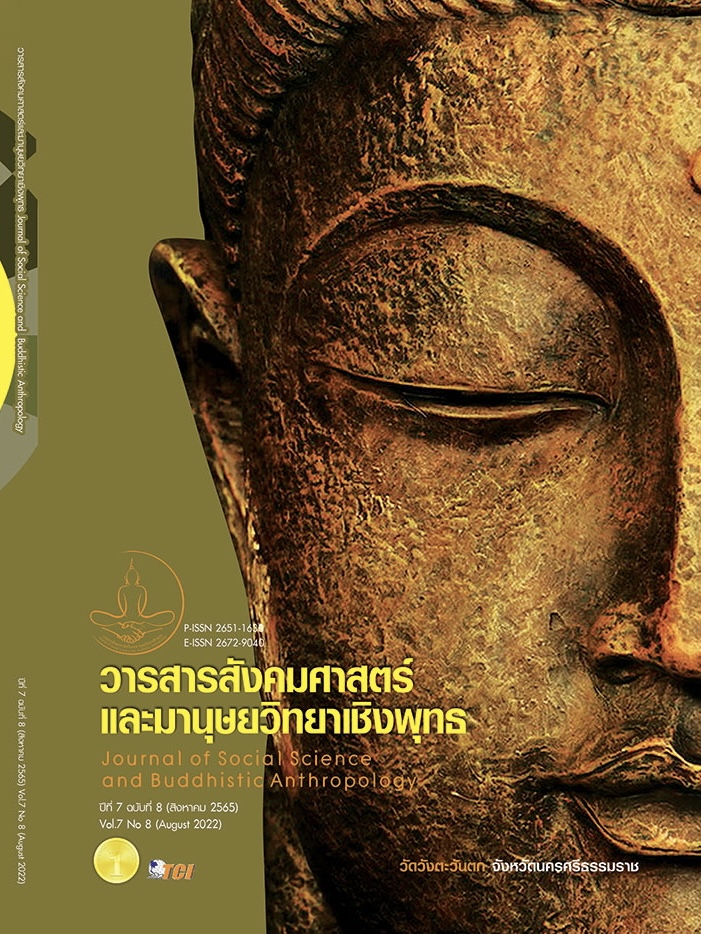การพัฒนาโปรแกรมส่งเสริมความสามารถทางภาษา สำหรับเด็กที่ใช้ประสาทหูเทียม ระดับปฐมวัย
คำสำคัญ:
โปรแกรม, ภาษา, ประสาทหูเทียมบทคัดย่อ
บทความวิจัยฉบับนี้มีวัตถุประสงค์เพื่อ 1) ศึกษาสภาพปัจจุบัน ปัญหาและแนวทางการส่งเสริม ความสามารถทางภาษาสำหรับเด็กที่ใช้ประสาทหูเทียม ระดับปฐมวัย 2) เพื่อพัฒนาโครงร่างโปรแกรมส่งเสริม ความสามารถทางภาษาสำหรับเด็กที่ใช้ประสาทหูเทียม ระดับปฐมวัย การวิจัยนี้เป็นการวิจัยเชิงคุณภาพ กลุ่มเป้าหมาย ประกอบด้วย ผู้ปกครอง ครูผู้สอนและผู้เชี่ยวชาญเกี่ยวกับเด็กที่ใช้ประสาทหูเทียม จำนวน 30 คน คัดเลือกแบบเจาะจง เก็บข้อมูลโดยใช้ประเด็นคำถามและแบบบันทึกการสนทนากลุ่ม ผลการวิจัย พบว่า 1) ปัจจุบันผู้ปกครองเป็นหลักในการส่งเสริมความสามารถทางภาษาของเด็ก โดยมีครูและ ผู้เชี่ยวชาญเกี่ยวกับเด็กที่ใช้ประสาทหูเทียมร่วมส่งเสริมความสามารถทางภาษา ด้านปัญหา พบว่ามี 3 ส่วน คือ 1.1) ครูเรียนร่วม ขาดความรู้ ความเข้าใจในการสอนเด็กในชั้นเรียน ร่วมและขาดการสื่อสารกับผู้ปกครอง 1.2) ผู้ปกครอง ขาดความรู้ ความเข้าใจเกี่ยวกับการเตรียมความพร้อมลูกก่อนเข้าเรียน 1.3) ผู้เชี่ยวชาญ ไม่สามารถเชื่อมต่อการฝึกระหว่างผู้เชี่ยวชาญกับครูได้ ทั้งนี้แนวทางการส่งเสริมทางภาษาที่พบเหมือนกันทั้ง 3 กลุ่ม คือ ต้องการให้ครูเรียนร่วมสอนภาษาขณะอยู่ในชั้นเรียน ควรเตรียมความพร้อมเด็กที่ใช้ประสาทหูเทียมแบบร่วมมือกันทั้งครูเรียนร่วม ผู้ปกครองและผู้เชี่ยวชาญ 2) โครงร่างโปรแกรมส่งเสริมความสามารถทางภาษาเด็กที่ใช้ประสาทหูเทียม ระดับปฐมวัย เป็นการมีส่วนร่วมระหว่างครูและผู้ปกครอง ในด้านการจัดการเรียนการสอนในชั้นเรียนร่วมโดยบูรณาการการสอนพูดผ่านการฟังซึ่งใช้เทคนิคการสอนภาษาสำหรับเด็กที่ใช้ประสาทหูเทียม และในด้านการเตรียมความพร้อมก่อนเรียนโดยผู้ปกครองเด็ก
เอกสารอ้างอิง
ดารัตน์ เศรษฐชัยบดี. (2559). รูปแบบการจัดบริการสนับสนุนเด็กที่มีความบกพร่องทางการได้ยินที่ใส่ประสาทหูเทียม. ใน ดุษฎีนิพนธ์ศึกษาศาตรดุษฎีบัณฑิต สาขาภาวะผู้นำทางการศึกษา. มหาวิทยาลัยราชภัฏสวนดุสิต.
เบญจมาศ พระธานี. (2543). กลยุทธในการสอนพูดแก่เด็กที่มีความบกพร่องทางการได้ยินโดยวิธี Auditory Verbal Approach. ใน เอกสารโครงการสัมมนาวิชาการ.ขอนแก่น: ภาควิชาโสต ศอ นาสิกวิทยา คณะแพทย์ศาสตร์. มหาวิทยาลัยขอนแก่น.
ปริญญา หลวงพิทักษ์ชุมพล. (2553). การพัฒนาโปรแกรมการบำบัดการพูดโดยใช้การฟังสำหรับเด็กหูหนวกก่อนมีภาษาพูดที่ใช้เครื่องประสาทหูเทียม. ใน ดุษฎีนิพนธ์ศึกษาศาตรดุษฎีบัณฑิต สาขาการศึกษาพิเศษ. มหาวิทยาลัยศรีนรินทรวิโรฒ.
มลิวัลย์ ธรรมแสง. (2561). โรงเรียนที่เป็นมิตรกับเด็กหูหนวก. คู่มือสำหรับผู้ปกครองนักเรียนที่มีความบกพร่องทางการได้ยิน. กรุงเทพมหานคร: มูลนิธิอนุเคราะห์คนหูหนวก ในพระบรมราชินูปถัมภ์.
สำนักงานเลขาธิการวุฒิสภา. (2550). รัฐธรรมนูญแห่งราชอาณาจักรไทย พ.ศ.2550. กรุงเทพมหานคร: สำนักงานเลขาธิการวุฒิสภา.
Badesch, B. (2018). The Harriet Lane Handbook. In Development Behavior and Mental Health. Philadelphia: Elsevier, lnc.
Forli, F. (2018). How does a bilingual environment affect the results in children with cochlear implants compared to monolingual-matched children. An Italian follow-up study. International journal of pediatric otorhinolaryngology, 105(2), 56-62.
National Institute on Deafness and other Communication Disorders. (2020). Meaning of Children with Cochlear Implants. in United States of America . Food and Drug Adminstration.
Nicholas, J. G. & Geers, A.E. (2018). Sensitivity of expressive linguistic domains to surgery age and audibility of speech in preschoolers with cochlear implants. Cochlear Implants International, 19(1), 26-37.
Patro, C. & Mendel, L.L. (2018). Gated Word Recognition by Postlingually Deafened Adults With Cochlear Implants: Influence of Semantic Context. Journal of Speech, Language, and Hearing Research, 61(3), 145-158.
Punch, R. (2010). Children With Cochlear Implants in Australia: Educational Settings, Supports, and Outcomes. Journal of Deaf Studies and Deaf Education, 15(4), 405-421.
Quigley, S. (1994). Developmental issues in deaf children. Journal of Pediatric Health Care, 7(4), 161-166.
ดาวน์โหลด
เผยแพร่แล้ว
รูปแบบการอ้างอิง
ฉบับ
ประเภทบทความ
สัญญาอนุญาต
ลิขสิทธิ์ (c) 2022 วารสารสังคมศาสตร์และมานุษยวิทยาเชิงพุทธ

อนุญาตภายใต้เงื่อนไข Creative Commons Attribution-NonCommercial-NoDerivatives 4.0 International License.








